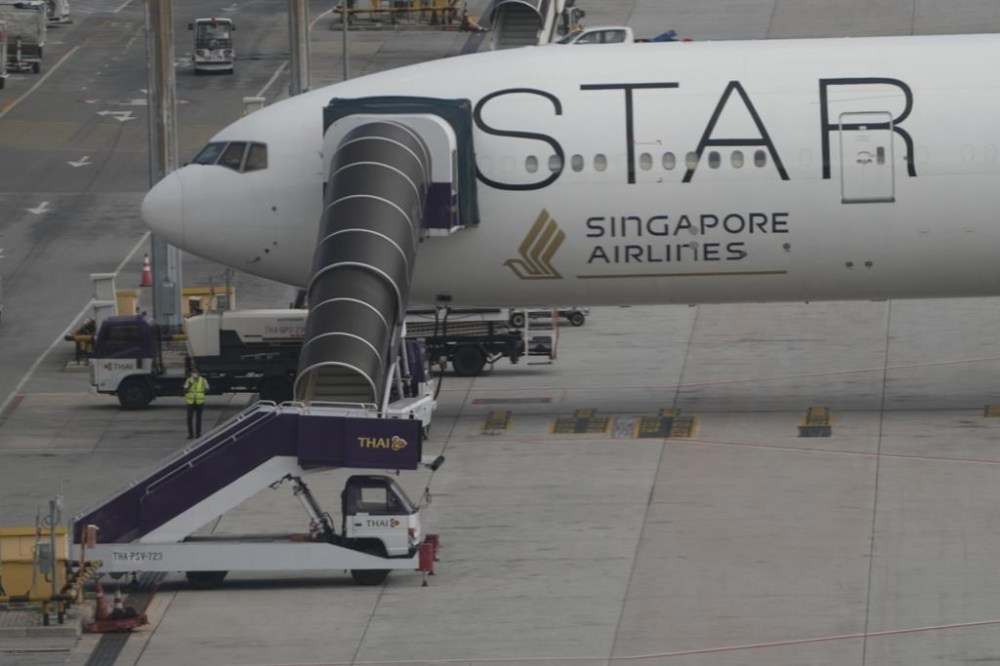‘Sheer terror’: Passengers describe turbulence-hit flight that put 20 in intensive care
Advertisement
Read this article for free:
or
Already have an account? Log in here »
To continue reading, please subscribe:
Monthly Digital Subscription
$1 per week for 24 weeks*
- Enjoy unlimited reading on winnipegfreepress.com
- Read the E-Edition, our digital replica newspaper
- Access News Break, our award-winning app
- Play interactive puzzles
*Billed as $4.00 plus GST every four weeks. After 24 weeks, price increases to the regular rate of $19.00 plus GST every four weeks. Offer available to new and qualified returning subscribers only. Cancel any time.
Monthly Digital Subscription
$4.75/week*
- Enjoy unlimited reading on winnipegfreepress.com
- Read the E-Edition, our digital replica newspaper
- Access News Break, our award-winning app
- Play interactive puzzles
*Billed as $19 plus GST every four weeks. Cancel any time.
To continue reading, please subscribe:
Add Free Press access to your Brandon Sun subscription for only an additional
$1 for the first 4 weeks*
*Your next subscription payment will increase by $1.00 and you will be charged $16.99 plus GST for four weeks. After four weeks, your payment will increase to $23.99 plus GST every four weeks.
Read unlimited articles for free today:
or
Already have an account? Log in here »
Hey there, time traveller!
This article was published 22/05/2024 (512 days ago), so information in it may no longer be current.
BANGKOK (AP) — Passengers on the Singapore Airlines flight that descended sharply after hitting severe turbulence described the “sheer terror” of the aircraft shuddering, loose items flying and people wrenched so badly that 20 remained Wednesday in intensive care.
“I arrived back in the airport and I couldn’t stop vomiting. I couldn’t walk, it was pretty bad,” said Josh Silverstone, 24, who was discharged from a hospital with a cut in his eye and a chipped tooth. He said it could have been “way worse.”
The British man said he was so scared that he bought in-flight internet access to message his mother: “I wasn’t trying to scare her, but I said ‘I love you.’”

It was still not clear what exactly caused the turbulence that sent the Boeing 777 carrying 211 passengers and 18 crew members on a 6,000-foot (around 1,800-meter) descent in about three minutes on Tuesday. The flight from London to Singapore was diverted to Thailand. A British man died, possibly of a heart attack.
Aviation investigators arrived in Bangkok on Wednesday. Singapore Transport Minister Chee Hong Tat said the U.S. National Transportation Safety Board was sending technical advisors because the incident involved a Boeing plane.
Singapore Airlines said 131 passengers and 12 crew members from Flight SQ321 who were well enough to travel were picked up on a special flight and arrived early Wednesday at Singapore’s Changi Airport.
Six crew members and 79 passengers stayed in Bangkok, where the majority remained in the hospital, said Singapore Airlines CEO Goh Choon Phong.
Samitivej Srinakarin Hospital, where most of the injured were taken, said the 20 people in intensive care include six Britons, six Malaysians, three Australians, two Singaporeans and one person each from Hong Kong, New Zealand, and the Philippines.
Passenger Beverley Mayers, who was not injured, described the situation inside the plane as “sheer terror.”

“The whole plane was shuddering … great pieces were falling off and dropping on the floor, people getting hit in the head,” she told Australia’s TV Channel 9 on arrival at Sydney airport.
Thai officials withheld the name of the dead man, but British media identified him as Geoffrey Kitchen, 73, who was going on a six-week holiday with his wife. A Thai airport official said Kitchen might have had a heart attack, though that hadn’t been confirmed.
Newlyweds Ali and Ramiza Bukhari, who were flying back from their honeymoon, told reporters at Sydney Airport that they were relieved to be back home.
“It was a very, very traumatic experience,” Ali Bukhari said.
Most people associate turbulence with heavy storms, but the most dangerous type is so-called clear air turbulence. Wind shear can occur in wispy cirrus clouds or even in clear air near thunderstorms, as differences in temperature and pressure create powerful currents of fast-moving air.
The U.S.-based Association of Flight Attendants said clear air turbulence is virtually undetectable with current technology. “One second, you’re cruising smoothly; the next, passengers, crew and unsecured carts or other items are being thrown around the cabin,” it said.

“Always follow crew instructions and wear your seatbelt whenever seated. It is a matter of life and death,” it added.
——-
Associated Press writer Eileen Ng in Kuala Lumpur, Malaysia, contributed to this report.

